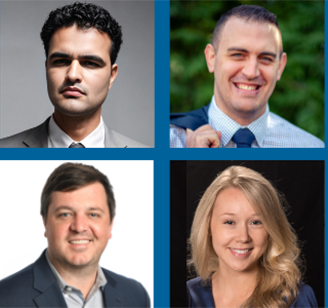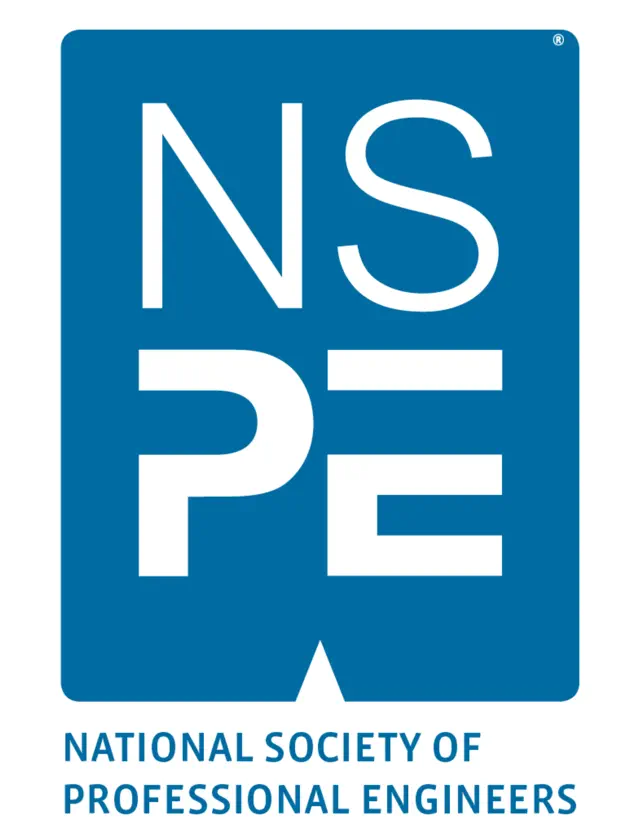November/December 2018
In Focus: Career Development
Comebacks Are an Option
BY DANIELLE BOYKIN
Discussions around failures in engineering typically involve tragic events such as the St. Francis Dam failure (1928), the Tacoma Narrows Bridge collapse (1940), the Hyatt Regency Hotel walkway collapse (1981), and the space shuttle Challenger explosion (1986). Those failures certainly do matter when illustrating how important it is to be a competent professional engineer, but they are not the usual types of failures that an individual engineer will experience during his or her career. “Failure” can come in many forms: a disastrous presentation to a client, miscommunication that hampers the progress of a project, or a missed promotion due to poor performance or attitude.
Researchers and career development experts have found that not only is to err human, but it’s also good for the type of learning that can pave the way to thriving in your studies and career. In his book Success Through Failure: The Paradox of Design, renowned engineer and academic Henry Petroski, P.E., illustrates how success and failures are connected. There’s an important role in recognizing that mistakes will occur, and it’s essential to understand how to leverage them to navigate the path to successful design.
Professionals who have successfully risen up the ranks should do more sharing about their failures and mistakes to help others seeking to rise to the next career level. Terry Suffredini, P.E., likes to say that her chemical engineering degree came with an asterisk. Upon graduating from high school, she had no idea what she wanted to do, but it wasn’t going to involve science. Or so she thought. A chemistry course and a helpful college professor would show her just how wrong she was about her future career. “I stumbled into chemical engineering, and I stumbled into my career path. I started coaching so I could show people that there’s a better way,” she says.
When Suffredini isn’t performing her duties as an engineering project manager, she’s doling out much-needed advice as a certified life and career coach. Through her personal experiences and coaching relationships, she understands that mistakes and failures can sometimes cause embarrassment. “Engineers tend to be perfectionists, but if they’re afraid of making a mistake, they can’t grow, and that’s a career danger,” she says.
Failing Forward
People who get ahead, says Suffredini, are willing to take chances and fail forward. “You take an educated risk and accept that you may make a mistake or fail. The people that have become the biggest successes in the world have failed too.”
Earlier in his career, Chris Butler, P.E., worked for an operating coal mining company where he was responsible for long-range planning rather than day-to-day onsite mining operations. When his company was purchased by another firm, the leadership philosophy and job requirements changed, including one that required everyone to work at the mining site. Butler wasn’t shy about expressing his view that these changes didn’t make sense or weren’t efficient. “When I completed a big project, they said, ‘We don’t have any more work for you,’” recalls the past president of the West Virginia Society of Professional Engineers.
Luckily, Butler found a new position in no time. Yet, this experience provided a critical career lesson on humility and overcoming pitfalls—even self-inflicted ones. “In hindsight I now see their perspectives and I wasn’t going to fit into the company mold. Your personal development isn’t always going to align with the company that you work with. If you conduct yourself professionally, you will get other jobs.”
When Bob Becnel, P.E., F.NSPE, looks back at some of the decisions he made early in his career, one clearly comes to mind: a failure to plan for potential upheavals and maximizing networking opportunities. When his previous employer was on the verge of shutting down, he had to scramble to find another position. Thankfully, he worked in a high-demand field, and he had some contacts through NSPE that led to a position with Boeing. The lesson learned: Networking is important and can lead to new opportunities. “I blame my lack of experience and partially stubbornness in not realizing how critical the situation was and not planning how I would deal with how job situations can change,” he says.
Becnel is the president-elect of the Missouri Society of Professional Engineers and serves on the board of directors for MSPE’s St. Louis chapter. Being active in NSPE or a state society, he says, can allow professional engineers to gain much-needed leadership and communication skills. And these skills can be developed in a safe environment without the fear of scrutiny from an employer. “For example, if you flub up a presentation or you make a wrong assumption and act on it, you’ll be able to get some coaching if you seek it out. You’re not going to get a bad mark on an internal review or a reprimand from a senior person in your firm.”
Lessons Learned
Henry Ford may have said it best, “The only real mistake is the one from which we learn nothing.”
Angela Musselwhite, P.E., F.NSPE, believes that she has learned more from slip-ups than from anything else during her career. “I benefitted from being in situations where I had the freedom to make mistakes within reason and the consequences weren’t detrimental,” she recalls. “I’d have to spend a few more hours to correct them, but next time I’d remember the lesson because someone allowed me to make the mistake.”
Musselwhite’s experiences have also helped her to be a better mentor. She recalls supervising a young engineer who struggled with making decisions and experienced an almost paralyzing fear of making a wrong one. This led to time management issues because he wanted to make the perfect decision. “I convinced him that the sky wasn’t going to come crashing down over a small mistake,” says the vice president and principal engineer at S&ME Inc. in Greenville, South Carolina. “We shouldn’t make too many mistakes, but we are human and are bound to make them. He eventually got more comfortable with this concept.”
Musselwhite’s firm also has processes, including a senior staff-level review, to catch miscalculations and oversights. One of the best teaching tools, she says, is allowing people to make a blunder, take ownership of it, and come back with the right solution. “We help them to learn from their mistakes as opposed to punishing them or not giving them good projects in the future. It’s not about the mistakes that you make, it’s how you respond to them.”
Terry Suffredini agrees that companies that give employees freedom to fail will get much better outcomes from their employees than companies that make them afraid.
What’s the best action to take following a failure? To make a course correction, Suffredini advises getting lots of feedback. Feedback is neither negative or positive, she says, it’s just information to help determine how to perform better. “Sometimes we can figure it out ourselves, but it’s also helpful to muster up the courage to ask someone else,” she says. “It’s beneficial, because now you’ll know exactly what you need to work on, and if you need additional training, you find a way to get it.”
Suffredini encourages professionals to assess their strengths instead of their weaknesses. “You get more bang for your buck by focusing on your strengths, while simply focusing on your weaknesses puts you at risk for being too negative,” she advises.
She believes that if employees are pushed to do things that aren’t their strengths, they don’t benefit, and neither will their employers. “If you’re in a position that makes you play to your weaknesses, you’re probably in the wrong position.”
Although Cameron Klos, P.E., doesn’t see failure, per se, in his career so far, he admits to periods of “wanting to run before I could walk” to move up the career ladder quickly. Mistakes are going to come, but what really counts is how you address them. “If you mess up, you must be open and honest about it,” says the 34-year-old president of the Minnesota Society of Professional Engineers and senior electrical engineer at Burns & McDonnell. “Usually, there’s something you can do to make it better. But if you sit on it, it could get worse.”
Klos pursued engineering licensure because he wanted to be the best engineer he could be and put protection of the public first. Yet, that responsibility can come with its own challenges. “Often, when you’re talking about failures, it’s some mistake in a design that leads to some type of injury,” he says. “The gravity of this, especially when you’re young, can be almost paralyzing and overwhelming.”
There are ways to ease that feeling, however. A robust quality control and review process, says Klos, can give young engineers confidence.
Corporate culture also plays a role. Young engineers who don’t feel like they can do what they are passionate about and have the support of company leaders, says Klos, will be less likely to go out on a limb and try new and creative things. “There are many individuals that aren’t reaching that potential for that very reason. I came to B&M because there’s an entrepreneurial spirit here, and that has really helped a lot of people achieve a lot more than they probably ever thought possible because they’re supported in their endeavors.”
A Culture of Mentorship
When Chris Butler isn’t performing duties as a senior regional manager with Natural Resource Partners, a company that owns interests in coal, aggregates, and industrial minerals across the US, or ones in his role on WVSPE’s executive board, he mentors young professionals. “We have all made mistakes as young engineers, and young engineers don’t know what they don’t know. I advise them to take constructive criticism from someone who wants to help build their career and don’t take it personally.”
Butler adds, “You want to be at a company that allows you to be creative and take a risk, but you also have to be willing to experience some failures to be a better engineer.”
Three years ago, Klos started a mentorship program in his local Burns & McDonnell office to help colleagues gain the knowledge needed to move up the ladder. Employees are assigned a mentor who helps them establish goals and a plan to meet those goals. In meetings that take place at least once a month for a year, mentors provide feedback and discuss progress.
Klos hopes the program fosters a culture of mentorship where knowledge is passed down to young engineers to keep the firm moving forward. “Eventually more senior engineers will retire, but if they haven’t planted that seed of knowledge to younger engineers, that knowledge will be gone. We have significantly improved on this with our program.”
When Tory Pierce, P.E., started his career after graduating with a civil engineering degree from the University of Delaware in the 1980s, the expectations were extremely high, and you had to deliver on those expectations. This was the same whether in his previous positions with government agencies or at his current firm, Frederick Ward Associates in Bel Air, Maryland. “You either did it or you failed. A lot of that hasn’t changed.”
However, Pierce, president of the Maryland Society of Professional Engineers, understands that a bit of struggle as an engineering professional comes with the territory. It’s not unusual for certain aspects of the project to turn out in a way not intended by the team or client. “When this happened, I went right back to the grindstone to change it,” recalls the firm president. “I had a commitment to learning from my mistake and correcting it on my own time.”
These early lessons have encouraged Pierce to ensure that his firm is focused on growing young talent through an extensive project-planning process. “It’s during the planning of the project that the teaching occurs. The younger folks are taught that you need to follow these steps in the process. We encourage our team to collaborate and ensure that we’re not getting too far ahead of ourselves.”
Every Friday, staff also gets together to discuss projects. “We talk about the good and the bad of things,” says Pierce. “We have open and honest conversations and allow everyone to participate. This helps us to improve our communication and prevents us from getting stuck in a rut.”
Creating an environment of trust is essential to making this work. “Employees clearly have to trust the managers to receive mentoring, and the managers have to trust their staff to be able to take directions and follow the advice and criteria that’s needed to accomplish our goals.”


 Volunteering at NSPE is a great opportunity to grow your professional network and connect with other leaders in the field.
Volunteering at NSPE is a great opportunity to grow your professional network and connect with other leaders in the field. The National Society of Professional Engineers (NSPE) encourages you to explore the resources to cast your vote on election day:
The National Society of Professional Engineers (NSPE) encourages you to explore the resources to cast your vote on election day: “Being active in NSPE or a state society can allow professional engineers to gain much-needed leadership and communication skills. And these skills can be developed in a safe environment without the fear of scrutiny from an employer.”
“Being active in NSPE or a state society can allow professional engineers to gain much-needed leadership and communication skills. And these skills can be developed in a safe environment without the fear of scrutiny from an employer.”
